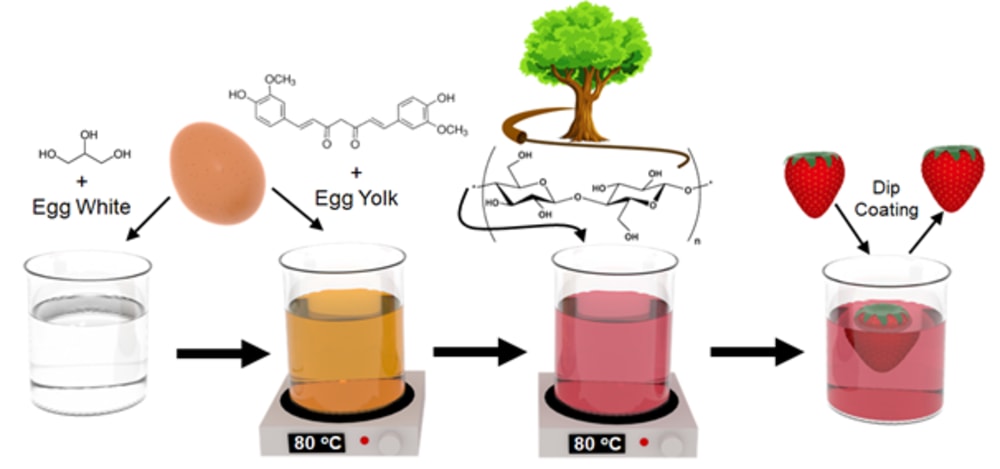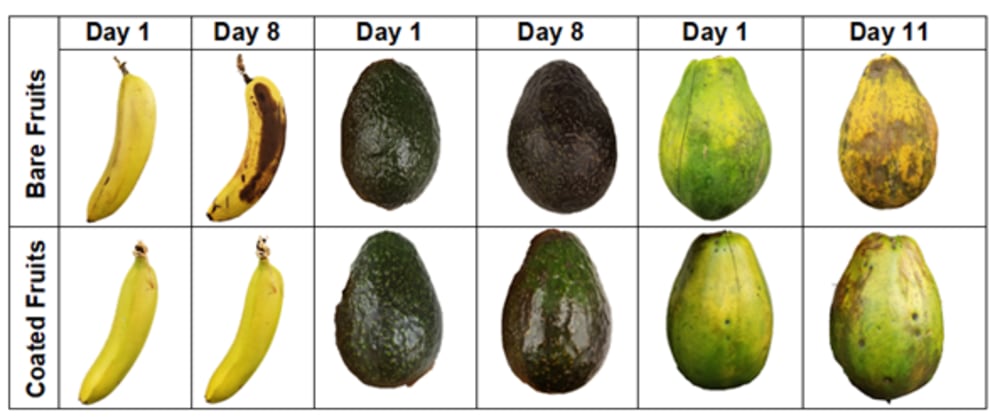

Hunger and chronic undernourishment impact over 800 million people in the world. While countries are increasingly making efforts to reduce food insecurity by pursuing sustainable agricultural practices, a third of the food produced worldwide is still wasted. This issue is especially prominent for fresh produce, including fruits and vegetables, in which nearly 40-50% of crops grown are wasted. Reducing this waste has tremendous potential since even a 15% decrease could mean feeding 25 million more people.
Among the several commercial technologies, the most common method for the preservation of perishable produce is waxing, involving the application of an artificially coating with fatty acid-based preservatives. However, its lack of wash-ability and the presence of potentially toxic compounds pose the unavoidable risks of adverse effects on human health and environment. Meanwhile, other commercially available methods include refrigeration, modified atmospheric packaging (MAP), and paraffin-based active coatings. However, these expensive, time-consuming alternatives visually alter the appearance of fruits and affect the flavor of fruits.
It is clear that there is a critical need for alternative green strategies that will increase the shelf-life of perishable foods without altering the biological and physicochemical characteristics of the products. Our solution is a multifunctional protein-based conformal nanocomposite coating from readily available inexpensive or waste biomaterials. The nanocomposite coating offers a unique combination of distinctive properties that satisfy multiple preservation requirements such as material flexibility, edibility, wash-ability, effectiveness, biodegradability, and appearance.
Our nanocomposite conformal coating is primarily comprised of poly(albumen) protein derived from egg white and cellulose nanocrystal from wood pulp, along with various other biocompatible modifiers. Its synthesis starts with a combination of egg white protein (albumen), egg yolk, and glycerol that guarantee the formation of a strong edible film. Addition of curcumin improves the antimicrobial and antioxidant properties that reduce microbial growth and allows the optimal exchange of gases in the microenvironment - decreases oxygen and increases carbon dioxide – in order to maintain freshness. Lastly, incorporation of cellulose nanocrystals further reduces the water and gas permeance. Applicable via spray-coating and dip-coating, our coating is flexible and overcomes the significant challenge of simultaneously achieving the lowest oxygen and water vapor permeability for a natural food coating.
Preservation studies revealed that, after 8-11 days post-purchase, all the uncoated fruits showed enzymatic browning and decaying while the coated samples retained the appearance and firmness for over a week. In vitro studies confirmed the edibility of our coating. In contrast to wax coatings, the coating is easily washable and provides a more aesthetically pleasing, glossy visual appearance. Yet, the most substantial advantage that differentiates our technology from other natural wax alternatives is its ease of processing, which leads to its high potential for low-cost mass production.
Our invention has the potential to be a disruptive technology and truly capture the huge potential of the edible packaging market, estimated to reach $679M by 2025. Particularly appealing is its potential to mitigate the 17~65% premium cost for organic produce and provide an affordable alternative for the growing population of health-conscious consumers.
Video
-
Awards
-
 2021 Sustainable Technologies/Future Energy Category Winner
2021 Sustainable Technologies/Future Energy Category Winner -
 2021 Top 100 Entries
2021 Top 100 Entries
Like this entry?
-
About the Entrant
- Name:Muhammad M. Rahman
- Type of entry:teamTeam members:Sylvia Jung, Nancy Cui, Neethu Pottackal, Pulickel M. Ajayan, Muhammad M. Rahman
- Patent status:pending





